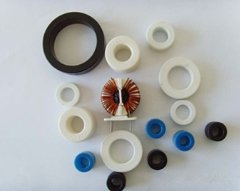Nanocrystalline Toroidal Cores for Current Transformers – A Game-Changing Innovation

The energy sector today is rapidly evolving, and the demand for a reliable and efficient power supply is constantly on the rise. This is where current transformers (CTs) come into play. CTs are widely used to measure and protect electrical systems, especially in high voltage applications. The accuracy, performance, and reliability of CTs depend on the core they use. Nanocrystalline toroidal cores have emerged as a game-changing innovation that is disrupting the traditional core technology. In this article, we will explore the benefits of using nanocrystalline toroidal cores for current transformers.
What are Nanocrystalline Toroidal Cores?
Nanocrystalline toroidal cores are made up of a metallic glass alloy consisting of iron, nickel, and molybdenum. These cores are primarily used in low power applications, as they offer higher permeability than other conventional cores. Unlike conventional cores, which are polycrystalline and have grain boundaries, nanocrystalline cores are almost single crystal in nature, resulting in low hysteresis and eddy current losses.
Advantages of Using Nanocrystalline Toroidal Cores for Current Transformers
1. Superior Accuracy
Accuracy is a crucial parameter for any current transformer. Nanocrystalline toroidal cores offer superior accuracy even in extreme temperatures, which is vital for reliable measurements in high voltage applications. These cores have a high saturation flux density, resulting in a higher output voltage per turn, making it possible to measure even small currents with high accuracy.
2. Low Hysteresis and Eddy Current Losses
Hysteresis and eddy current losses are two significant factors that affect the performance of a CT. Nanocrystalline toroidal cores have almost zero hysteresis losses and substantially low eddy current losses compared to conventional cores. Due to the absence of grain boundaries, nanocrystalline cores exhibit low magnetic anisotropy and low magnetostriction, resulting in low hysteresis and eddy current losses. This means that the CTs using these cores require less energy to operate, reducing energy losses and improving efficiency.
3. Wide Frequency Response
Nanocrystalline toroidal cores exhibit a wide frequency response, making them suitable for both low and high-frequency applications. This wide frequency response also means that these cores are less sensitive to harmonic currents, resulting in a more stable and accurate measurement.
4. Smaller Size and Weight
Nanocrystalline toroidal cores have a smaller size and weight compared to conventional cores. This is due to their high permeability and low hysteresis and eddy current losses. The smaller size and weight of these cores make them ideal for applications where space and weight are significant constraints.
5. Improved Reliability
Nanocrystalline toroidal cores offer improved reliability due to their high thermal stability and resistance to aging, making them suitable for high-temperature applications. These cores also exhibit a low temperature coefficient of permeability, resulting in more stable and consistent performance over a wide temperature range.
Conclusion
Nanocrystalline toroidal cores are a game-changing innovation that is transforming the current transformer technology. The accuracy, performance, and reliability of CTs using these cores are far superior to those using conventional cores. The small size and weight, wide frequency response, and low hysteresis and eddy current losses of these cores make them ideal for high voltage applications. As the energy sector continues to evolve, nanocrystalline toroidal cores will play a critical role in meeting the growing demand for reliable and efficient power supply.